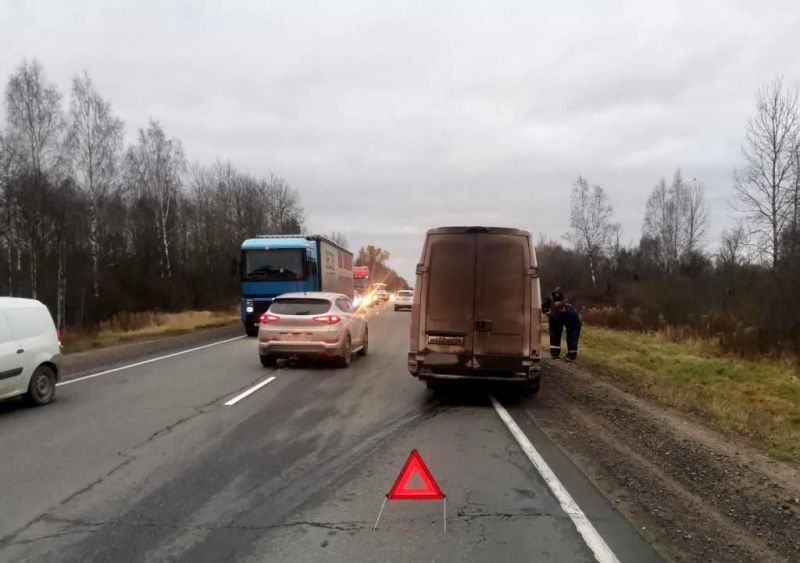
How to stay safe while driving on the highway
Content
Highway driving requires preparation, practice and respect. All drivers need to know the basics of safety for their own well-being and the well-being of other road users.
Driving around the city is perceived by many as stressful. It can feel more dangerous when there are so many vehicles driving next to you. Intersections, entrances, exits and other issues can be confusing for experienced and new drivers alike, and collisions seem to be more frequent.
In order not to drive around the city, some people prefer to drive on the highway. Or, if you choose to go on a road trip, you'll want to choose a highway and interstate route. However, the highway is fraught with many dangers and must be approached with due respect and preparation in order to travel safely on the highway.
Part 1 of 3: Prepare for the Highway Ride
Preparing for a highway trip includes getting your vehicle ready and making sure you have the necessary equipment and supplies in case of an emergency.
Step 1: Make sure you have enough fuel. If you don't have enough gas to get where you're going, fill up the tank or schedule a gas station along the way.
- A warning: Running out of gas on the highway is one of the most dangerous things that can happen, especially if it can be prevented.
Step 2: Inspect your vehicle. You can give your car a quick pre-trip inspection, or book an inspection with a mechanic like AvtoTachki.
Solve any urgent safety concerns before entering the highway.
Make sure your fluids are topped up and your tire pressure is good.
Step 3: Make sure you have a spare tire. Make sure the spare tire is where it should be.
Check the tire pressure on the spare tire. It is often overlooked in inspections by inexperienced mechanics and owners.
Make sure the jack and tools are where they should be.
Step 4: Have an emergency kit in your car. A few common items can save a life in the event of an accident or emergency.
Have an emergency blanket, matches, candles, bottled water, a few perishable snacks, and a first aid kit in your car.
Keep it together in a drawer or bag in the trunk so it doesn't get in the way.
Part 2 of 3: Be safe in your car
Ensuring maximum safety in a car is just as important as safe driving. Accidents are not always avoidable, so you must be prepared for them, even if you are the best driver on the road.
Step 1: Always wear your seat belt. Seat belts save lives when worn correctly.
Wear the waist belt low over your hips.
Adjust the shoulder strap so that it passes over the shoulder and collarbone, avoiding the neck if possible.
Fasten your seat belt before starting the engine to make sure you are fastened before driving.
Step 2: Lock the doors. To prevent your door from opening unexpectedly, keep it locked.
Curious children may accidentally open the door while the vehicle is moving, or malicious people outside your vehicle may try to get inside if your doors are not locked.
Many late model cars have door locks that automatically lock when a gear is engaged. If your car doesn't, use electric locks or manual locks to make sure the doors are locked.
Step 3: Adjust the seat for proper posture. Correct posture will help prevent back pain while driving, as well as keep your body in a safe position in the event of an accident.
- A warning: If you sit too close to the steering wheel, you may be injured by the airbag.
Step 4: Focus on the Road. Most crashes happen when you take your eyes off the road for just a few seconds.
If you feel tired, exit the highway at a rest stop or exit. Rest or collect yourself before continuing. Being late is better than having an accident.
Step 5: Avoid using portable electronics. Using a cell phone manually while driving is illegal in most parts of the country, but just as dangerous where it is legal.
Part 3 of 3: Driving Safely
Step 1: Don't drive faster than you are comfortable with. Drive as fast as conditions allow.
If the road is slippery or wet, slow down.
Try to match the speed of the movement as much as possible, without moving at a speed that you consider unsafe.
Step 2: Use your turn signals. Using signal lights tells other drivers where you are going.
Give a turn signal ten vehicle lengths before changing lanes.
Always check traffic in your destination lane two or three times before moving on.
If someone lets you into their lane when you honk, show courtesy by waving your hand if it's safe to do so.
Step 3: Use Stoplights. When you stop, apply the brake three times to show your intentions to the drivers behind you.
This is a particularly good idea when you are turning into a side street or parking lot where traffic controls are not being used.
Step 4: Obey road signs and laws. They are here for your safety.
Come to a complete stop at stop signs and look in all directions before continuing.
Accelerating on a yellow traffic light can lead to an accident. Always try to stop when the yellow light comes on.
Step 5: Be careful when driving on the highway. When you're driving down the highway, anything can happen, from animals running into the road and children playing nearby, to an accident happening right in front of you.
Being vigilant means that you will be ready to avoid an obstacle or an accident without panicking.
Highway driving can be daunting, even if you're well-prepared. If you're feeling overwhelmed, turn off the highway in a safe place and pack up before continuing.
